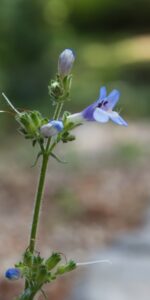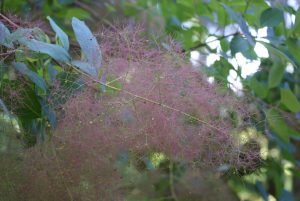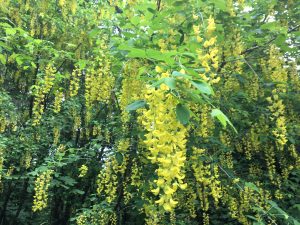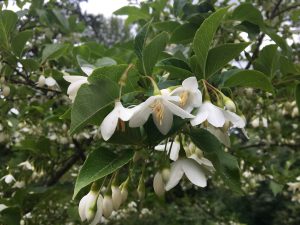With the first day of summer on June 20, peak season at Hoyt Arboretum is upon us! Summer at Hoyt Arboretum is pure Portland magic. Located just minutes from downtown in Washington Park, this museum of living trees offers a peaceful retreat from the city’s summer heat. Whether you’re looking for a shady stroll through towering redwoods, a scenic picnic spot, or a deeper dive into the world of trees, we’ve got you covered.
This month at Hoyt Arboretum


Tai Chi: Introduction to Better Balance Mondays starting June 2, 2025 at 2:00 pm – 3:00 pm
Basic Principles: Tai Chi & Qigong Wednesdays starting June 4, 2025 at 2:00 pm – 3:00 pm
Basket Making with Western Redcedar June 7 and June 8, 2025 at 10:00 am – 4:00 pm
Healing Herbs of the Arboretum June 10, 2025 at 6:30 pm – 8:30 pm
Qigong Wednesdays starting June 11, 2025 at 9:30 am – 10:30 am
Clay Bud Vases June 14, 2025 at 10:30 am – 12:30 pm
Flower Pressing Workshop June 21, 2025 at 1:00 pm – 3:00 pm
Forest Bathing June 24, 2025 at 3:00 pm – 5:00 pm
Forest Bathing June 28, 2025 at 1:00 pm – 3:30 pm
Embracing Summer’s Bloom: Art & Seasonal Transitions June 29, 2025 at 10:30 am – 1:30 pm
Glorious Midsummer in the Trees June 29, 2025 at 1:00 pm – 3:30 pm
Registration is required. Click the class links to sign up.
Public Tours Are Back!


Explore the trees and trails of Hoyt Arboretum with a knowledgeable guide. Throughout the seasons, we’ll feature one of three our nationally-accredited collections.
Magnolia Collection: April 6 – June 15
Conifer Collection: June 22 – September 21
Maple Collection: September 28 – October 26
Every Sunday at 11am.
Sign up in person, day-of at the Visitor Center.
Trees to See


Stewartia
Compare the gorgeous flowers of three different Stewartia species! Look for the cup-shaped, five-petaled blooms of Stewartia malacodendron with their centers of purple stamens and blue anthers. In contrast, see Stewartia rostrata’s yellow-centered white flowers tinged with maroon. Then there’s Stewartia pseudocamellia, whose species name means false camellia for its camellia-like flowers (note Stewartia is, in fact, related to Camellia); these blooms are round, flat, a bit cupped, with showy orange-yellow anthers in the center. Stewartia’s smooth, orange, yellow-brown bark is distinctly decorative.
Location: Wildwood Trail near Vietnam Veterans Memorial
Purple Smoke Tree
With purple smoke tree, or smoke bush, the show isn’t about its tiny yellow spring flowers. Rather, it’s the smoky effect, come summer, of the puffy, hazy, purple-pink hairs attached to the long-stalks of the flower clusters after they’ve bloomed. The smoke tree is tough and easy to grow. It’s native from southern Europe to central Asia to northern China. This plant’s autumn performance is pretty great too: its beautifully veined purple leaves turn yellow and orange before dropping.
Location: At intersection of Wildwood Trail and Hawthorn Trail
Golden Chain Tree
The golden chain tree is a real knock-out with its dramatic late-spring blooms. Hanging in long clusters called racemes, its flowers are bright yellow, pea-like (this plant is in the pea family, after all), and produce a sweet fragrance. The 19th-century English poet Francis Thompson described these blossoms as a “honey of wild flame.” Native to the mountains of central and southern Europe, Laburnum’s legume seed pods carry an alkaloid that is toxic to humans; actually, all parts of the plant are poisonous.
Location: Wildwood Trail around the east water tank
Japanese Snowbell
Japanese snowbell shines in May and June, when this native of East Asia produces drooping clusters of bell-shaped, slightly fragrant white flowers. They’re easy to see because they hang down, while the tree’s foliage sweeps upward. This tree is popular for its graceful, elegant shape. It’s a common street and yard tree in Portland. After bloom, flowers give way to green-brown drupes. The leaves turn yellow before falling in autumn. The orange-brown fissures on the bark of older trees provides winter interest.
Location: Maple Trail, western part of the trail
Stay Up-To-Date with Hoyt Arboretum!
Subscribe to our email newsletter
AND



